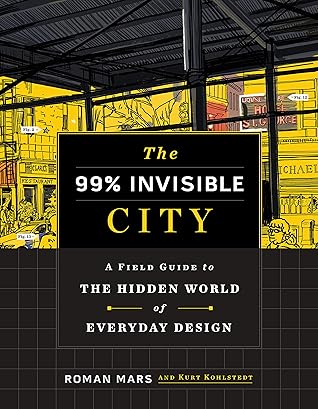More on this book
Community
Kindle Notes & Highlights
by
Roman Mars
Read between
January 1 - January 15, 2024
How the Post Office Created America by Winifred Gallagher.
“These giants are more constant than evergreens,” observed John Updike in his poem “Telephone Poles,” an ode to America’s vast network of wooden utility posts. “They have been with us a long time. They will outlast the elms.”
It may seem like we live in a wireless age, but utility poles are still there to facilitate voice and text communications, transmit electricity to and through cities, and connect people in ever-evolving ways.
It also didn’t help that truck drivers had a tendency to run up against the rails intentionally, using friction to help slow them down on steep descents, which damaged the barriers.
It’s hard to look at Jersey barriers and see much more than a lump of concrete formed into a commonsense shape, but everything about them is highly engineered. No single inventor made these
dividers what they are today—they are a product of a lengthy and ongoing design process. In a lot of ways, they reflect roadway development more broadly, where intuitive starting points lead down winding paths to solutions that only seem obvious in hindsight.
A Swedish television station even held a contest to write the best song to help people remember the imminent switch. The winner, “Håll Dej Till Höger, Svensson” (“Stick to the Right, Svensson”) by the Telstars, involved a bit of a double entendre. In Swedish, “keeping to the right” is shorthand for being faithful to your spouse while “going left” means having an affair.
In the long history of doors and locks, there was only a brief stretch of time when people could feel a justified sense of perfect security. It lasted for about seventy years, starting in the late 1700s, with a highly secure mechanical lock that no one was able to breach.
Standing on a forty-foot-high platform at the New York Crystal Palace, he gestured
to an assistant to cut a support rope to simulate a snapped elevator cable. Otis fell just a few inches before his automatic brake kicked in and brought the platform to a halt, eliciting cheers from the audience. While Otis didn’t dream up the idea of a vertical lift system, he made it safer and showed off its safety in style.
A few years back, there was an effort to find and erect a plaque at the geographical center of San Francisco. When asked if such a marker was necessary, Public Works Director Mohammed Nuru explained to a San Francisco Chronicle reporter that “it’s important to know where the center of the city is.” When he was pressed to explain why it was important, though, Nuru said that “he didn’t really know.” The article continues: “After thinking it over, he suggested that once you know where the center is, you can tell how far some other place is from it, although he added that he didn’t know what that
...more


